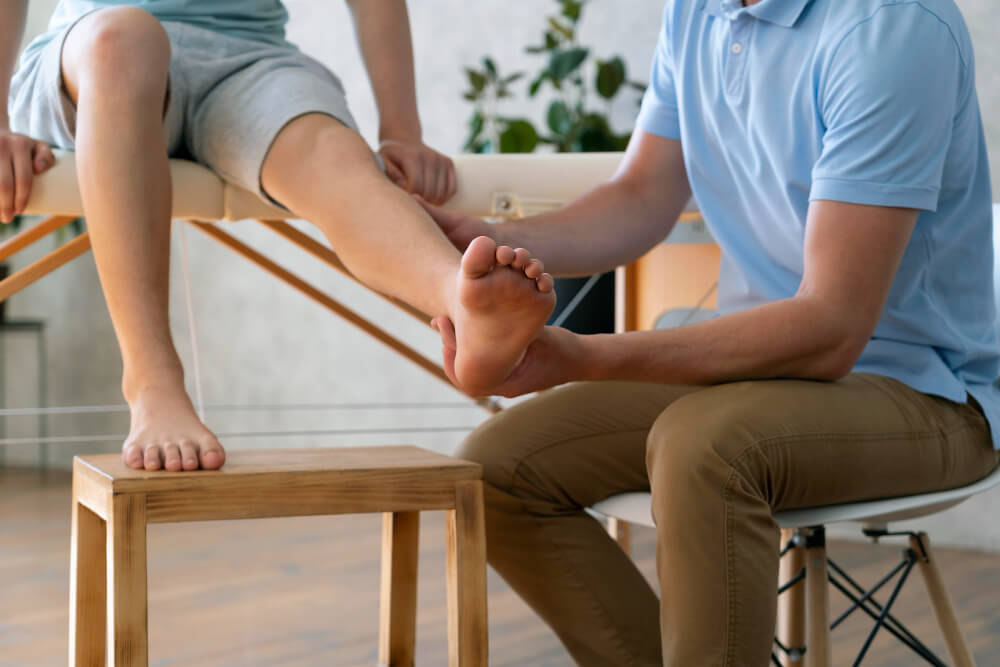Beyond the Hop: Effective Sports Injury Treatment for Speedy Sprained Ankle Recovery
Sports offer a plethora of benefits, from physical fitness to mental resilience. However, the pursuit of athletic glory can sometimes come with a physical cost – injuries. Sprained ankles are a prevalent concern for athletes, accounting for a significant portion of all sports injuries. They occur when the ligaments connecting the bones in the ankle joint are stretched or torn beyond their normal limits.
This article sheds light on sprained ankles and their treatment, providing valuable insights to guide your recovery journey. By understanding the signs and symptoms of a sprained ankle and the importance of early intervention, you can work with your healthcare professional to develop a personalized treatment plan that gets you back in the game quickly and safely.
Understanding Sprained Ankles: Signs, Symptoms, and Severity
The severity of a sprained ankle can vary depending on the extent of ligament damage. Here’s a breakdown of the signs and symptoms:
Mild Sprain:
- Mild pain and tenderness around the ankle joint
- Slight swelling and bruising
- Difficulty walking, but generally possible without significant assistance
Moderate Sprain:
- Moderate pain and difficulty bearing weight on the injured ankle
- More noticeable swelling and bruising
- Limited range of motion in the ankle joint
Severe Sprain:
- Severe pain that makes walking nearly impossible
- Significant swelling and bruising
- Possible instability in the ankle joint
It’s crucial to seek medical attention, especially for moderate or severe sprains, to ensure proper diagnosis and treatment. Ignoring a sprained ankle can lead to complications like chronic pain, ankle instability, and even arthritis in the long run.
The Importance of Early Intervention for Sprained Ankles
Time is of the essence when dealing with a sprained ankle. Early intervention can minimize healing time and prevent complications:
- Prompt Evaluation: Seeking medical attention promptly allows for an accurate diagnosis of the sprain’s severity and the development of a tailored treatment plan.
- RICE Therapy: This cornerstone of treatment involves Rest, Ice, Compression, and Elevation. Resting the injured ankle prevents further damage, while ice application reduces inflammation and swelling. Compression with an elastic bandage minimizes swelling, and elevation helps reduce blood flow to the injured area.
- Preventing Complications: Early intervention can help prevent complications like chronic pain, instability, and muscle weakness.
Comprehensive Treatment Options for Sprained Ankles
Effective sports injury treatment for sprained ankles involves a multifaceted approach:
RICE Therapy:
As mentioned earlier, RICE therapy is the foundation of treatment for sprained ankles. Here’s a detailed breakdown of each component:
- Rest: Avoid activities that aggravate the sprain. Depending on the severity, this might involve using crutches for a few days.
- Ice: Apply ice packs wrapped in a towel for 15-20 minutes at a time, several times a day, for the first few days after the injury.
- Compression: Use an elastic bandage to provide gentle support and minimize swelling. Wrap the bandage snugly but not too tight, ensuring proper blood circulation.
- Elevation: Whenever possible, elevate the injured ankle above the level of your heart to reduce swelling.
Physical Therapy:
A physical therapist plays a vital role in sports injury treatment and rehabilitation:
- Pain Management: Techniques like ultrasound or electrical stimulation can help manage pain and promote healing.
- Strengthening Exercises: Specific exercises target muscles around the ankle joint, improving strength and stability to prevent future sprains.
- Balance and Proprioception Training: Enhancing balance and proprioception (awareness of body position) is crucial for a safe return to sports.
- Range of Motion Exercises: These exercises help restore flexibility and a full range of motion in the ankle joint.


